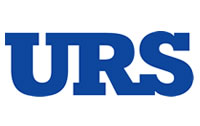It’s a balancing act for leaders in giving too much,
or too little direction.
It can be extremely hard for a leader to resist jumping in and giving too much direction or oversight. Leaders can also err to the side of not giving enough. So what’s the right balance? How does a leader decide how much to be involved? There is no precise answer for every circumstance. But we can tap into rock and roll for some guidelines.
.38 Special, a rock band that originated in Jacksonville, Florida, had a bunch of hits back in the mid 1970s to the mid 1980s. Examples are Back Where You Belong, Rockin’ Into the Night, and Caught Up On You.
Because I’m one of those gray haired people approaching retirement, when they produced new albums, I bought them (on vinyl and on cassette tape). Cruising around in my ’75 Monte Carlo with tunes blasting, no internet or cell phones, life was good.
Team members should also be afforded a level of autonomy. After being trained and demonstrating proficiency, team members should be trusted to get their jobs done. Of course, it may take some coaching and supervision to get a person to proficiency.
Once team members are proficient, we need to lead more “loosely.” If a leader micromanages or inserts themselves into things they don’t need to be involved with, they will be “gripping too tightly” and will “lose control.” Team members will become unmotivated. They may even become passive aggressive or engage in malicious compliance.
What does a leader need to consider when determining the right balance of holding on loosely? There are several things to consider:
- The person or persons carrying out the task. How much do they know about the task? If it’s a team performing the task, does the team have enough knowledge and skill? Do they have the right attitude and professionalism?
- The nature of the task. How critical is the task? If there’s a problem, will it shut down the plant, or just cause a little embarrassment? Has it been well-defined? Are there step-by-step instructions available? Or, is it a novel problem requiring people to apply experience and knowledge to work through the issues, troubleshoot and evaluate tradeoffs?
- Your risk tolerance and objectives. Leaders need to have some ability to take on risk. If you can’t let go and let others be responsible for carrying out tasks, you’ll never have time to do administrative or managerial duties, nor have time to work on improvements. One of your objectives as a leader is to develop your team members. Not letting go and being involved with every task will discourage your team members and hamper their growth and development.
Notice that each of these things to consider require the leader to use judgment. Judgment is improved with experience. Therefore, the only way to develop and improve judgment is to apply your best current judgment. With each setback you learn something about the circumstances that caused the setback. With each victory you learn something about the circumstances that caused the victory.
As a leader, your trade is the performance of your team. Improve your team’s performance by holding on loosely, not clinging too tightly.
Go forth and do great things.
Sign Up for Productive Leadership Overview On-Line Training!
An on-line training course with over six and a half hours of video lessons. Self-paced.


















